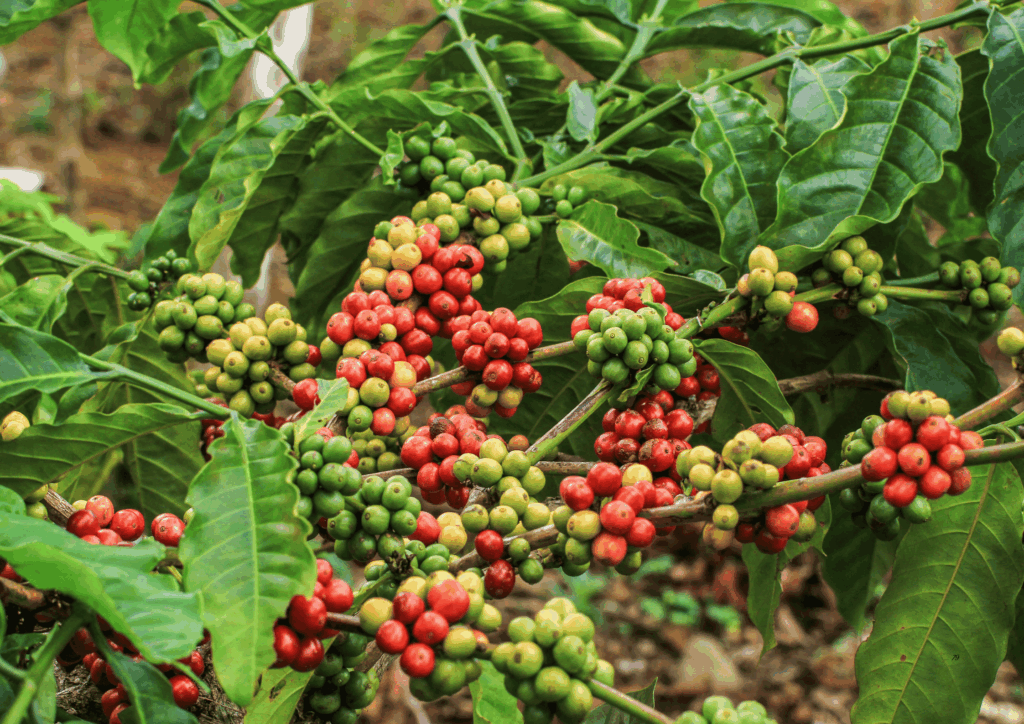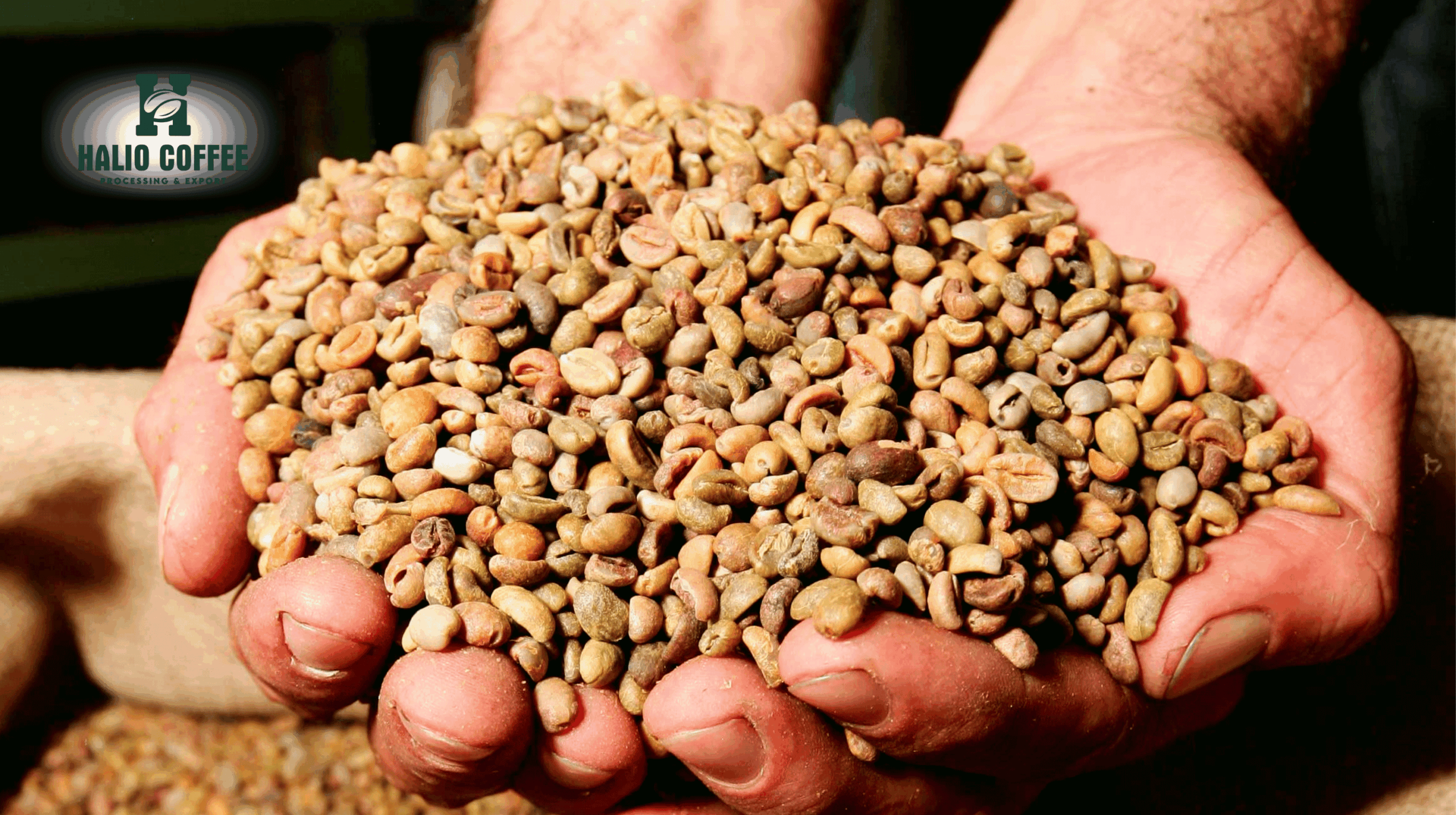Beyond the Bitter: A Roaster’s Guide to the Emergent World of Fruity Robusta Coffee Flavor
In our previous discussion, we delved into the meticulous craft of Natural Process Robusta for Roasters, exploring how Vietnamese producers are revolutionizing coffee quality through advanced agricultural and processing techniques. We established the how. Now, we venture further into the exhilarating result of this innovation: the what. This is a deep dive into a flavor frontier that, until recently, was considered impossible for the species—the vibrant, complex, and utterly surprising spectrum of Fruity Robusta Coffee Flavor.
For the discerning coffee professional—the green buyer, the master roaster, the product developer—this is not merely a novelty. It is a paradigm shift. The emergence of reliably fruity and nuanced Robusta from Vietnam presents a powerful tool for differentiation, blend innovation, and meeting the demands of an increasingly adventurous consumer base. This article will dissect the science behind these flavors, map the specific profiles being produced, and provide a practical guide for sourcing and application.
See more:
- Single Origin Robusta Natural
- Specialty Robusta Natural Process
- Halio Coffee – Your Trusted Fresh Coffee Distributor of Robusta & Arabica Beans
The Genesis of Flavor: Deconstructing How Robusta Develops Fruit Notes
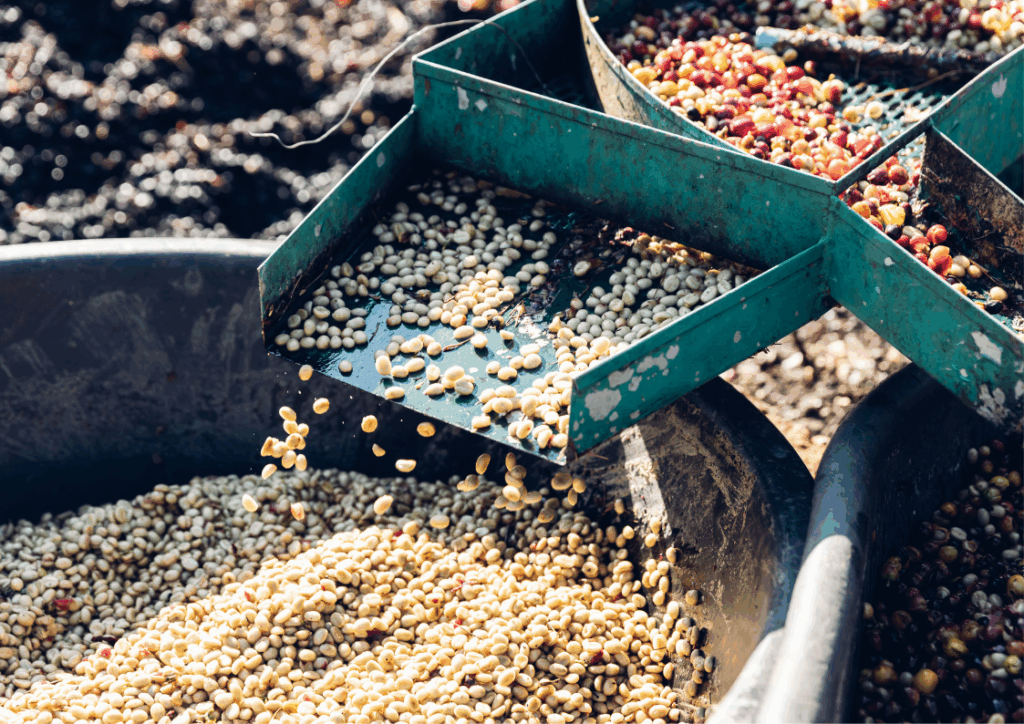
The traditional flavor profile of Robusta—characterized by notes of dark chocolate, burnt caramel, and a rubbery bitterness—is not an inherent trait of the bean itself. Rather, it is the product of a historical focus on high-yield, low-cost commodity processing. To understand the origin of a Fruity Robusta Coffee Flavor, we must look at the cherry as a vessel of potential and at modern processing as the key to unlocking it.
From Sugar to Spectacle: The Critical Role of Mucilage and Brix
The journey to a fruity cup begins with the raw material: the coffee cherry. The sweet, sticky layer of fruit pulp surrounding the bean, known as mucilage, is a complex composition of sugars (fructose, sucrose, glucose), pectins, and acids. In commodity processing, this layer is often seen as a byproduct to be removed or an obstacle to quick drying. In specialty processing, it is the primary engine of flavor creation.
The concentration of sugars within this mucilage, measured in Brix, is the single most important predictor of a coffee’s potential for complex flavor development. Vietnamese producers at the forefront of this movement are now using refractometers in the field, ensuring that only cherries with a high Brix reading (often 22% or higher) are selected for their top lots. This high sugar content provides the essential fuel for the microbial activity that will define the final cup profile.
The Microbial Engine: Fermentation’s Decisive Impact on Flavor Precursors
Fermentation is the biochemical magic that transforms the cherry’s simple sugars into the complex aromatic compounds we perceive as flavor. This process is driven by a diverse ecosystem of wild yeasts and bacteria present on the coffee cherry’s skin and in the surrounding environment. During the extended drying time of a natural process, these microorganisms metabolize the sugars and produce a cascade of chemical compounds, including:
- Alcohols: Such as ethanol and glycerol, which contribute to the coffee’s body and perceived sweetness.
- Organic Acids: Including lactic acid and acetic acid, which, in controlled amounts, can introduce a pleasant brightness and wine-like complexity, radically different from Robusta’s typically harsh pyrazinic bitterness.
- Ketones and Aldehydes: Compounds that contribute to creamy, buttery, and floral notes.
Esterification: The Chemical Reaction That Spells “Fruity”
The true secret behind a pronounced Fruity Robusta Coffee Flavor lies in a chemical reaction called esterification. During a slow, controlled fermentation and drying phase, the alcohols and organic acids produced by microbes react with each other to form esters. Esters are highly volatile aromatic compounds that are responsible for the smells and tastes we associate with most fruits.
For example:
- Ethyl acetate, in low concentrations, can create notes of ripe fruit or wine.
- Isoamyl acetate is famously associated with the flavor of banana.
- Other complex esters are responsible for notes of pineapple, strawberry, and tropical fruits.
By mastering the variables of fermentation—temperature, humidity, oxygen levels, and duration—producers can guide the microbial activity to favor the creation of these specific fruity esters, effectively building the coffee’s flavor profile from the ground up.
From Process to Palate: Linking Advanced Techniques to Specific Fruity Robusta Coffee Flavor Profiles
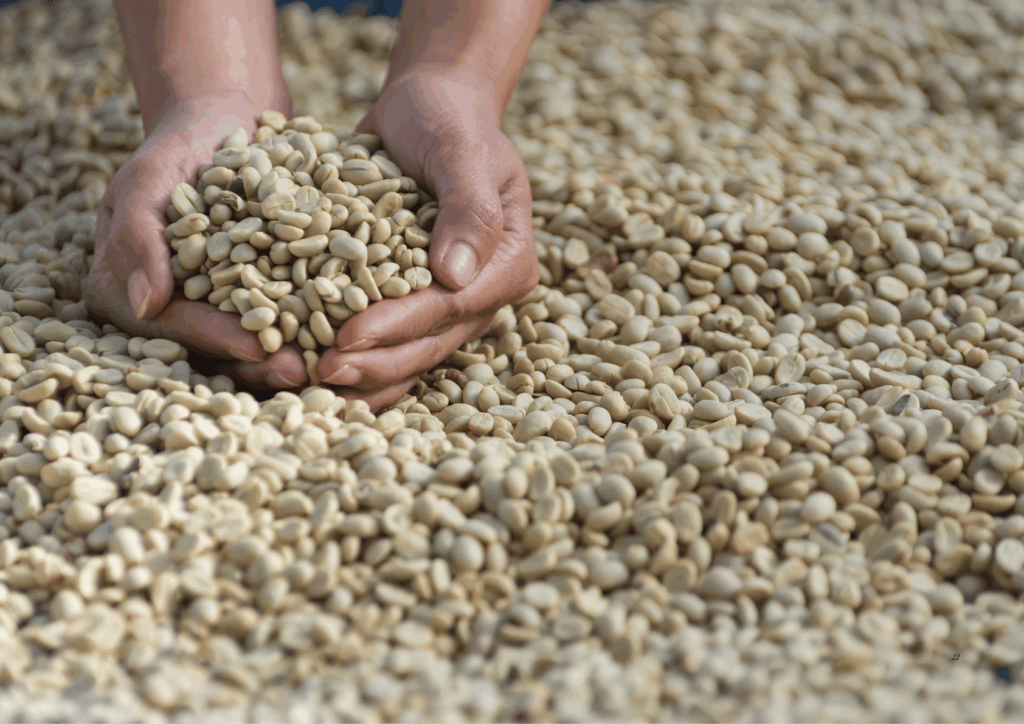
The broad category of “natural processing” encompasses a range of increasingly sophisticated techniques. Each method fosters a different microbial environment and, consequently, yields a distinct style of fruit expression. As a roaster or buyer, understanding this link is crucial for sourcing the exact profiles you desire.
The Classic Natural: Sun-Dried Sweetness and Dark Fruit
This is the foundational method of the specialty movement, focusing on slow, even drying on raised beds. The resulting Fruity Robusta Coffee Flavor from this process typically leans towards deeper, sweeter, and more developed fruit notes.
- Flavor Profile: Dominant notes of dried cherry, prune, raisin, and blackcurrant. This is often underpinned by a rich dark chocolate or cacao foundation, creating a profile reminiscent of a Black Forest cake.
Anaerobic Fermentation: Unlocking Tropical and Winey Notes
As discussed in our previous look at Natural Process Robusta for Roasters, anaerobic fermentation involves sealing the high-Brix cherries in an oxygen-deprived environment for a set period (typically 48-120 hours) before drying. This dramatically alters the microbial pathways, suppressing certain bacteria (like Acetobacter, which produces acetic acid or vinegar) and promoting others (like lactic acid bacteria and specific yeasts).
- Flavor Profile: This process is renowned for producing intense, unmistakable tropical fruit notes. Expect to find jackfruit, mango, passionfruit, and even lychee. It also develops a pronounced winey acidity and a boozy, brandy-like character, adding an entirely new dimension of complexity.
Carbonic Maceration: Elevating Acidity and Red Fruit Brightness
Borrowed from the wine world, carbonic maceration involves placing intact, whole cherries into a carbon dioxide-rich environment. The CO2 forces an intracellular fermentation to begin within the cherry itself before the external microbes take over. This tends to preserve more of the delicate fruit character and create a cleaner, more vibrant profile.
- Flavor Profile: This method excels at producing bright, crisp red fruit notes. Look for flavors of strawberry, red currant, raspberry, and a sparkling, almost effervescent acidity. It tames Robusta’s body slightly, creating a more elegant and aromatic cup suitable for a wider range of brewing methods.
The Next Frontier: Yeast Inoculation and Co-Fermentation
The most avant-garde producers are now moving into total process control by introducing specific, selected yeast strains during fermentation. By using commercial yeasts (often from the wine and beer industries, such as Saccharomyces cerevisiae), producers can predictably steer the fermentation towards the production of specific desired esters. Some are even experimenting with co-fermenting the coffee cherries with fruits like passionfruit or grapes to create unique hybrid profiles. While still nascent, these techniques represent the ultimate expression of producer intent and the future of differentiated coffee flavor.
A Lexicon for the Modern Roaster: Mapping the Fruity Robusta Flavor Wheel

For decades, the lexicon for Robusta has been limited. The advent of these new profiles requires an expanded vocabulary. When cupping these innovative Vietnamese coffees, roasters should be looking for the following categories of Fruity Robusta Coffee Flavor:
- Red & Dark Fruits: Cherry, Raspberry, Plum, Raisin, Blackberry, Blackcurrant.
- Tropical & Exotic Fruits: Jackfruit, Mango, Passionfruit, Lychee, Banana, Papaya.
- Stone Fruits: Apricot, Peach, Nectarine.
- Fermented & Winey Notes: Red Wine, Brandy, Fermented Grape, Balsamic, Rum.
It is crucial to note that these fruit flavors do not exist in a vacuum. The best examples of specialty Robusta balance this fruitiness with a rich foundation of supporting notes like dark chocolate, molasses, vanilla, almond, and subtle spice. The interplay between the bright fruit, the deep sweetness, and the heavy body is what makes these coffees so compelling.
Practical Application: Roasting and Blending with Fruity Robusta
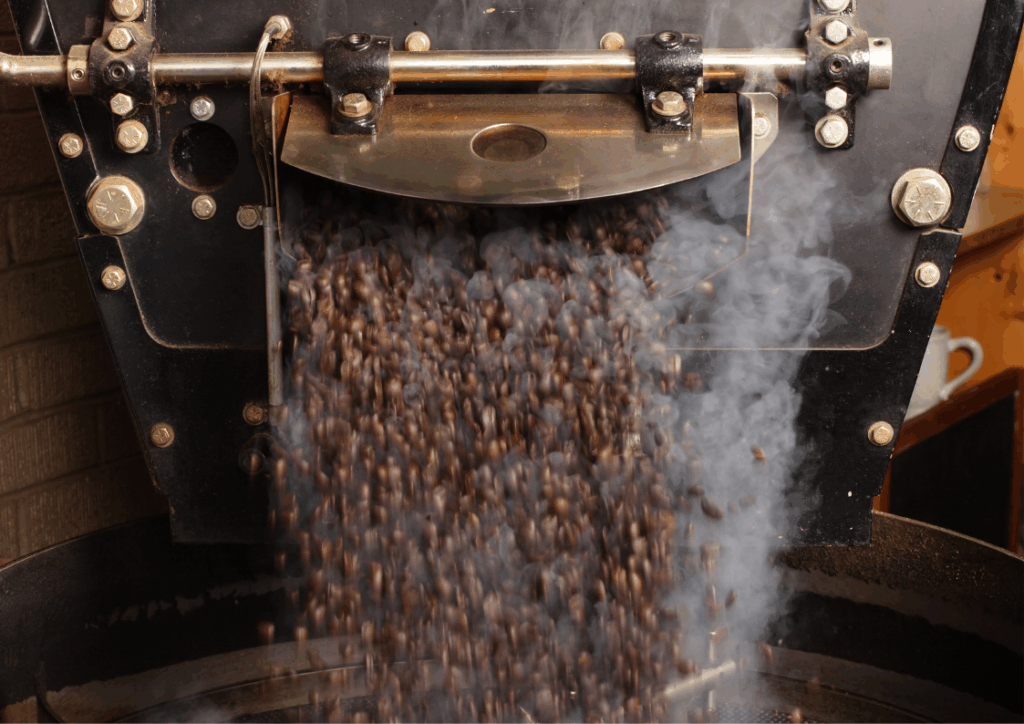
Understanding these flavors is one thing; successfully applying them in a commercial roastery is another. Fruity Robusta requires a different approach to both roasting and blending than its commodity counterpart.
Roasting Profiles for Fruit Preservation
To protect the delicate esters responsible for the Fruity Robusta Coffee Flavor, roasters must adapt their profiles.
- Gentle Heat Application: Use a lower charge temperature than you would for a traditional Robusta. This prevents scorching the bean’s surface and destroying the volatile aromatics before development can begin.
- Extend the Maillard Phase: Spend more time in the yellowing-to-browning stage (Maillard reaction). This helps to develop sweetness and body that will support the fruit notes, without rushing into an aggressive development.
- Moderate First Crack and Development: Approach the first crack with less energy. Keep the post-crack development time (DTR) relatively short. Over-developing the roast will quickly bake out the nuanced fruit and revert the coffee to a generic “roasty” or chocolatey profile. The goal is to highlight the origin and process, not the roast.
The “Third Wave” Espresso Blend
Historically, Robusta was added to espresso for crema and body, often at the expense of flavor. A fruity, natural-processed Robusta flips this script. Consider creating a modern espresso blend where the Robusta is a core flavor contributor, not just a functional component.
- Example Blend: Combine 70% of a clean, washed Central American Arabica (for structure and acidity) with 30% of a Vietnamese anaerobic natural Robusta. The result will be an espresso with the immense crema and body of a classic blend, but with an unexpected and delightful burst of tropical fruit and winey notes in the finish.
Standout Single Origins and Creative Brews
Do not limit these coffees to espresso. A well-roasted carbonic maceration Robusta can be a stunning single-origin offering for pour-over or AeroPress, challenging customers’ perceptions of what a Robusta can be. Its intense flavor profile also makes it an exceptional base for specialty cold brew concentrates and a secret ingredient for award-winning signature beverages in a café setting.
Sourcing with Confidence: How to Verify True Fruity Robusta Coffee Flavor
The excitement around these new profiles inevitably brings the risk of unsubstantiated claims. As a professional buyer, it is your responsibility to verify the quality and authenticity of the coffee you source.
- Demand Transparency in Processing: A supplier claiming to have a Fruity Robusta Coffee Flavor should be able to provide exact details on the processing method used. Was it anaerobic? For how long? Was it dried on raised beds? This information is not a trade secret; it is a mark of quality.
- The Primacy of Sample Cupping: Your palate is the ultimate arbiter of truth. When you receive a sample, cup it with a specific focus on aroma, sweetness, acidity, and finish. Are the fruit notes clean and distinct, or are they muddled with undesirable fermenty or phenolic taints?
- Build Relationships with Innovators: Seek out and build long-term partnerships with the Vietnamese producers and exporters who are pioneering these methods. They are your best resource for accessing unique micro-lots, ensuring consistency, and staying ahead of the innovation curve in this exciting and rapidly evolving segment of the coffee market.
- Coffee Prices Today, August 19: Arabica Hits Two-Month High, Robusta Retreats
- Timing is Everything: Your Definitive Vietnamese Coffee Harvest Season Guide
- Coffee Prices Today, Nov 25: Arabica Rebounds on Supply Tightness While Robusta Slips as Vietnam Rains Ease
- A Consultant’s Guide to Sustainable Coffee Sourcing Vietnam
- Rainforest Alliance Certified Coffee Vietnam: Elevating Vietnam’s Green Coffee Market
